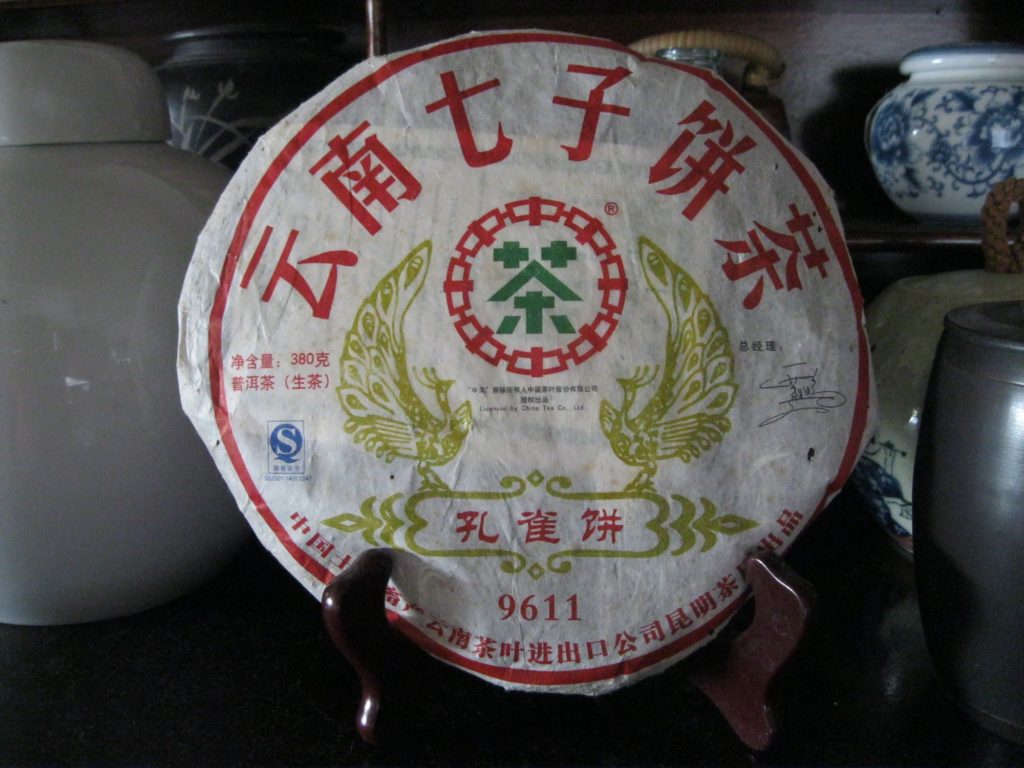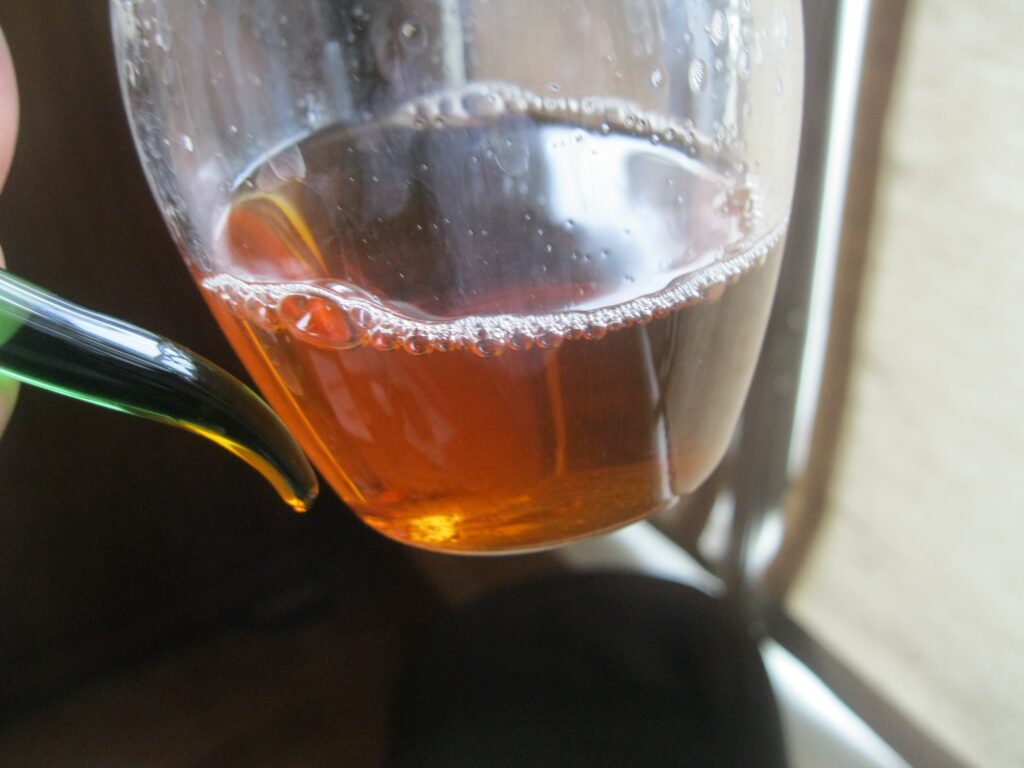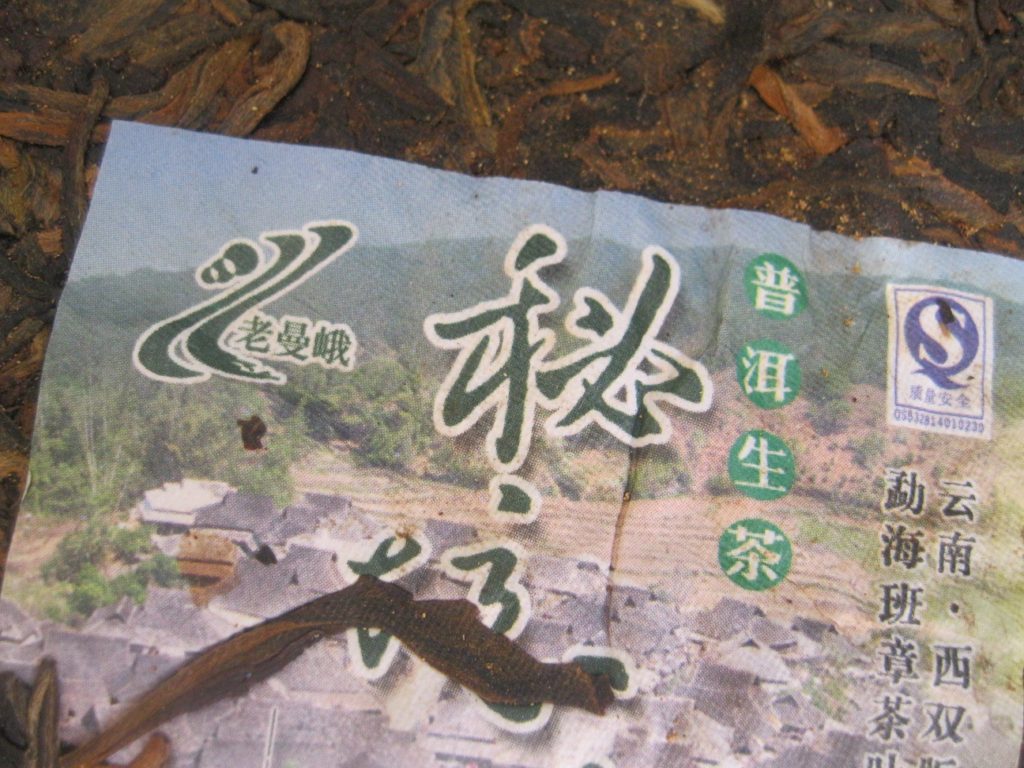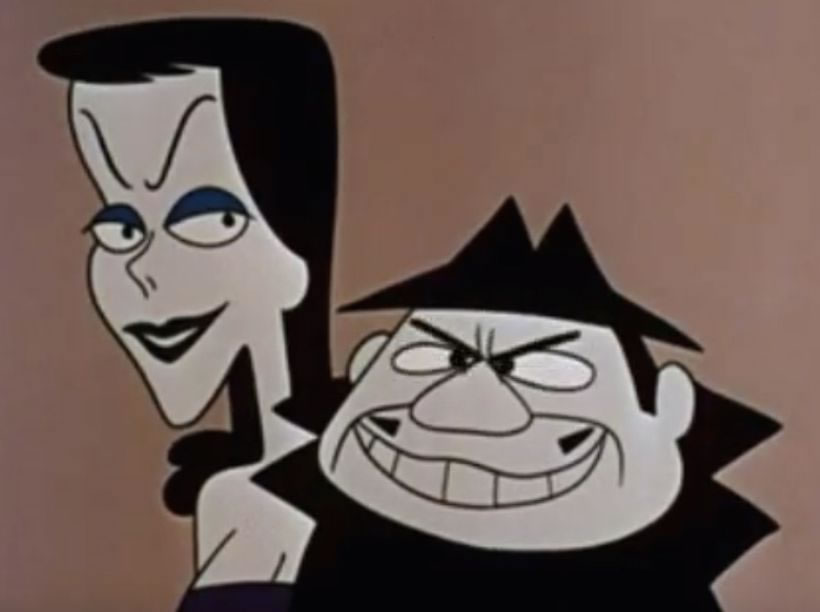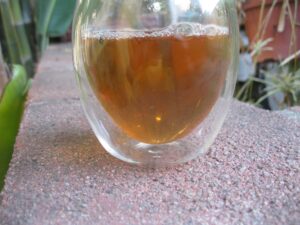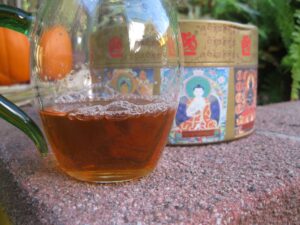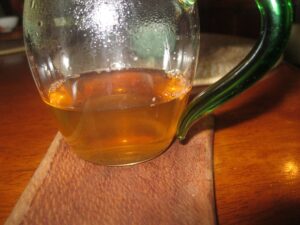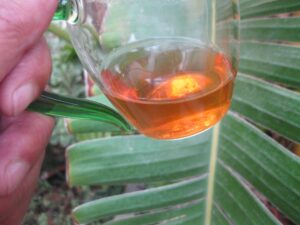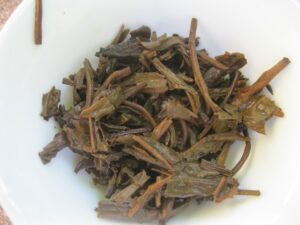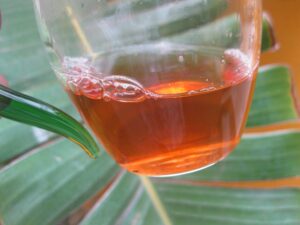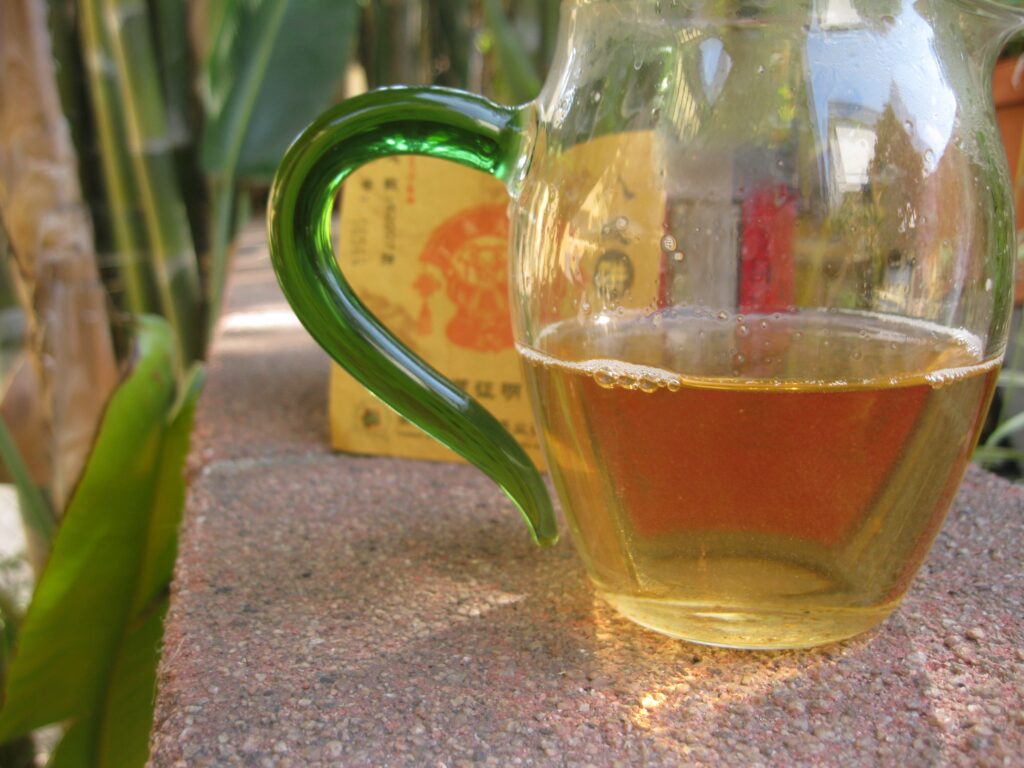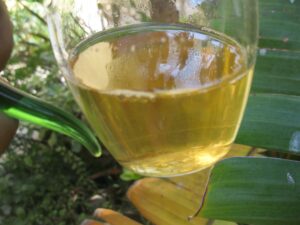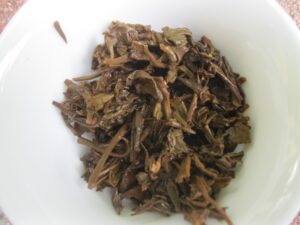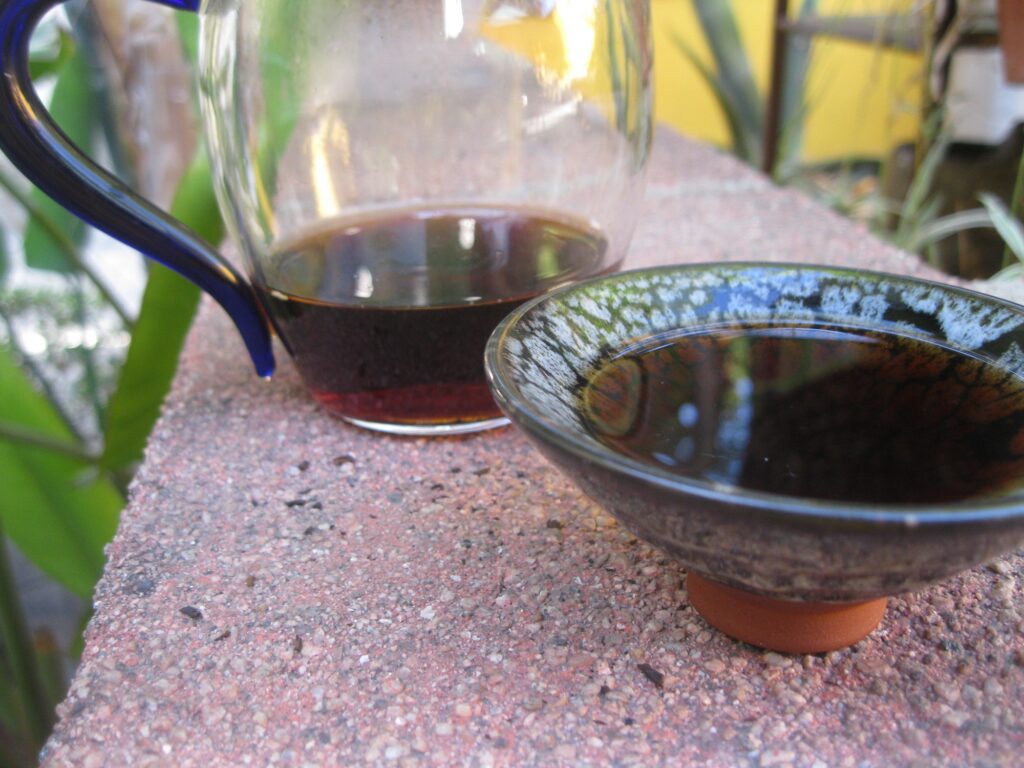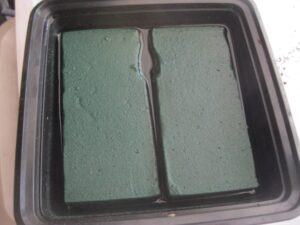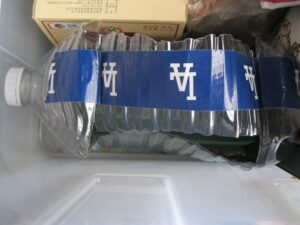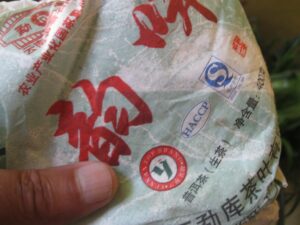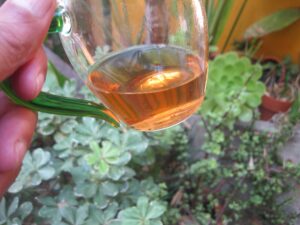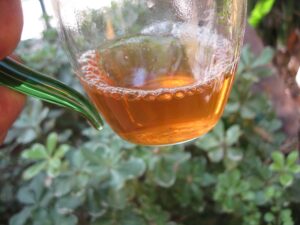Puerh Junky Visits Chameleon 2022
Puerh Junky Visits Chameleon 2022 pays some much-needed attention to Chameleon. It’s not brewing crystal clear anymore. Oh well. However, the Puerh Junky finally found the words for Chameleon‘s banana aroma. . . fried banana.
Chameleon is an excellent drinking experience. It is now at a stage where the ’06 Bulang Thick Brick, GPE was when first purchased in ’14. However, Chameleon is not humid stored. It lacks the cinnamon aroma too. Those looking for ripes that approximate coffee should consider the Ripe Sampler, but not this brick. Similar to the Thick Brick the huigan lasts forever. Comprised of fried banana, yam, lacquered wicker furniture in a Florida July, sweet roots like burdock and angelica, and a piquant kick of juniper, Chameleon is a lot like a Tootsie Roll beverage that changed its formula to sell in China. Very much in the tradition of Chinese tonics or if not the neighborhood of Dr. Pepper certainly its zip code.
This round, Chameleon brewed in the red-clay gaiwan at near flash brew durations till the fifth infusion, whereby it lasted for another three rounds with considerable pushing. The huigan, fragrance, and colour lasts through, though the texture and sweetness dissipate quicker thereafter. Unexpectedly exotic, terranean, and complex. Since acquisition it seems that the tastes have melded to make for a ripe experience beyond the ordinary.


